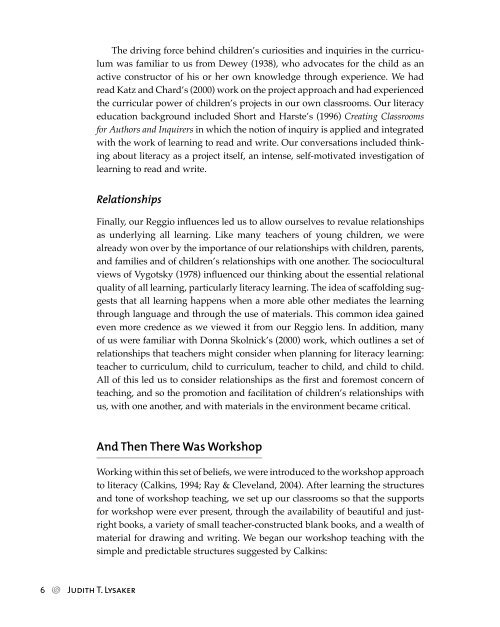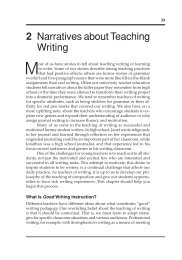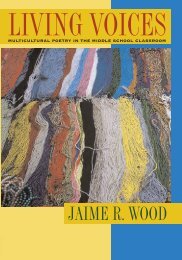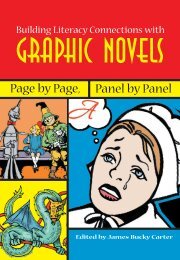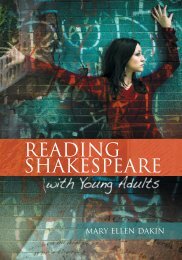View a Sample Chapter - National Council of Teachers of English
View a Sample Chapter - National Council of Teachers of English
View a Sample Chapter - National Council of Teachers of English
- No tags were found...
You also want an ePaper? Increase the reach of your titles
YUMPU automatically turns print PDFs into web optimized ePapers that Google loves.
The driving force behind children’s curiosities and inquiries in the curriculumwas familiar to us from Dewey (1938), who advocates for the child as anactive constructor <strong>of</strong> his or her own knowledge through experience. We hadread Katz and Chard’s (2000) work on the project approach and had experiencedthe curricular power <strong>of</strong> children’s projects in our own classrooms. Our literacyeducation background included Short and Harste’s (1996) Creating Classroomsfor Authors and Inquirers in which the notion <strong>of</strong> inquiry is applied and integratedwith the work <strong>of</strong> learning to read and write. Our conversations included thinkingabout literacy as a project itself, an intense, self-motivated investigation <strong>of</strong>learning to read and write.RelationshipsFinally, our Reggio influences led us to allow ourselves to revalue relationshipsas underlying all learning. Like many teachers <strong>of</strong> young children, we werealready won over by the importance <strong>of</strong> our relationships with children, parents,and families and <strong>of</strong> children’s relationships with one another. The socioculturalviews <strong>of</strong> Vygotsky (1978) influenced our thinking about the essential relationalquality <strong>of</strong> all learning, particularly literacy learning. The idea <strong>of</strong> scaffolding suggeststhat all learning happens when a more able other mediates the learningthrough language and through the use <strong>of</strong> materials. This common idea gainedeven more credence as we viewed it from our Reggio lens. In addition, many<strong>of</strong> us were familiar with Donna Skolnick’s (2000) work, which outlines a set <strong>of</strong>relationships that teachers might consider when planning for literacy learning:teacher to curriculum, child to curriculum, teacher to child, and child to child.All <strong>of</strong> this led us to consider relationships as the first and foremost concern <strong>of</strong>teaching, and so the promotion and facilitation <strong>of</strong> children’s relationships withus, with one another, and with materials in the environment became critical.And Then There Was WorkshopWorking within this set <strong>of</strong> beliefs, we were introduced to the workshop approachto literacy (Calkins, 1994; Ray & Cleveland, 2004). After learning the structuresand tone <strong>of</strong> workshop teaching, we set up our classrooms so that the supportsfor workshop were ever present, through the availability <strong>of</strong> beautiful and justrightbooks, a variety <strong>of</strong> small teacher-constructed blank books, and a wealth <strong>of</strong>material for drawing and writing. We began our workshop teaching with thesimple and predictable structures suggested by Calkins:6 D Judith T. Lysaker


